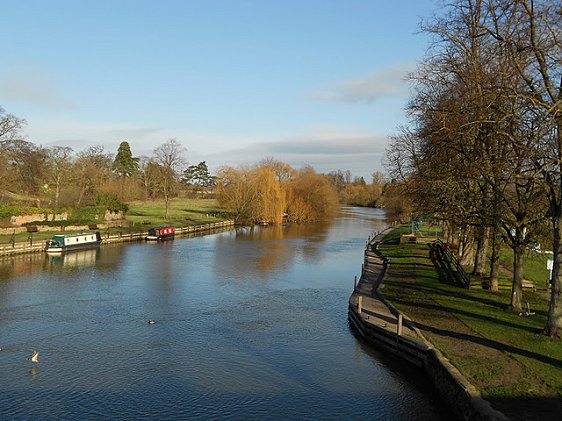 Wallingford, Oxfordshire, England: Source: https://commons.wikimedia.org/wiki/File:Wallingford.JPG
Wallingford, Oxfordshire, England: Source: https://commons.wikimedia.org/wiki/File:Wallingford.JPGAuthor: Sciencebloke

Wallingford is a market town in South Oxfordshire, England. Historically part of Berkshire, it was transferred to Oxfordshire during the boundary changes of 1974. The town has a population of around 7,000 people (2012 estimate).
Wallingford is situated on the western bank of the River Thames, at the foot of the Chiltern hills. It faces the village of Crowmarsh Gifford across the river, and the two are linked by the Wallingford Bridge.
Wallingford has existed since the Anglo-Saxon period, when it developed out of the river crossing. The town because a fortified borough within the Kingdom of Wessex. Under King Alfred the Great the town was fortified to withstand regular pillages by Vikings.
During the Norman Conquest, the Saxon lords did not put up much resistance, allowing William the Conqueror's army to cross the Thames on their way to London. As such it was held in high favor by the conquering Normans. Wallingford was listed in the Domesday Book of 1086 as just one of 18 towns in the kingdom with a population exceeding two thousand people.
Wallingford flourished in the Middle Ages until 1416, when the construction of the Abingdon Bridge across the River Thames between Abingdon and Dorchester diverted traffic from it, sapping it of its ersewhile prosperity. The town went into decline until the 18th century, when the construction of two toll roads reversed the decline.
 View of the Thames as seen from Wallingford Bridge: Source: https://commons.wikimedia.org/wiki/File:Thames_from_Wallingford.jpeg
View of the Thames as seen from Wallingford Bridge: Source: https://commons.wikimedia.org/wiki/File:Thames_from_Wallingford.jpegAuthor: Luciano Izzo

Visiting Wallingford
Take the M40 motorway from London to Junction 6, then head west on the B4009 until you reach Wallingford.Places of Interest in Wallingford
- Wallingford Castle: Medieval castle probably built by Robert D'Oyly between 1067 and 1071. Today it is in an advanced stage of ruin.
 Latest updates on Penang Travel Tips
Latest updates on Penang Travel Tips

Copyright © 2003-2025 Timothy Tye. All Rights Reserved.

 Go Back
Go Back